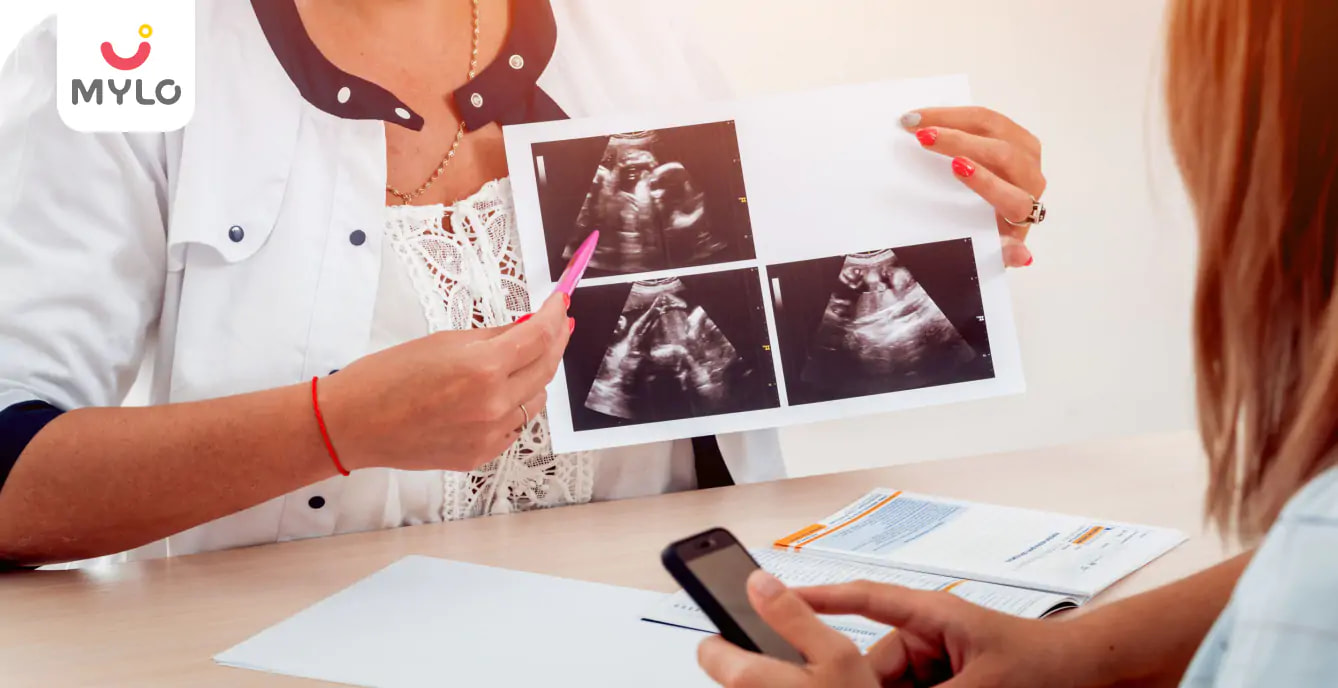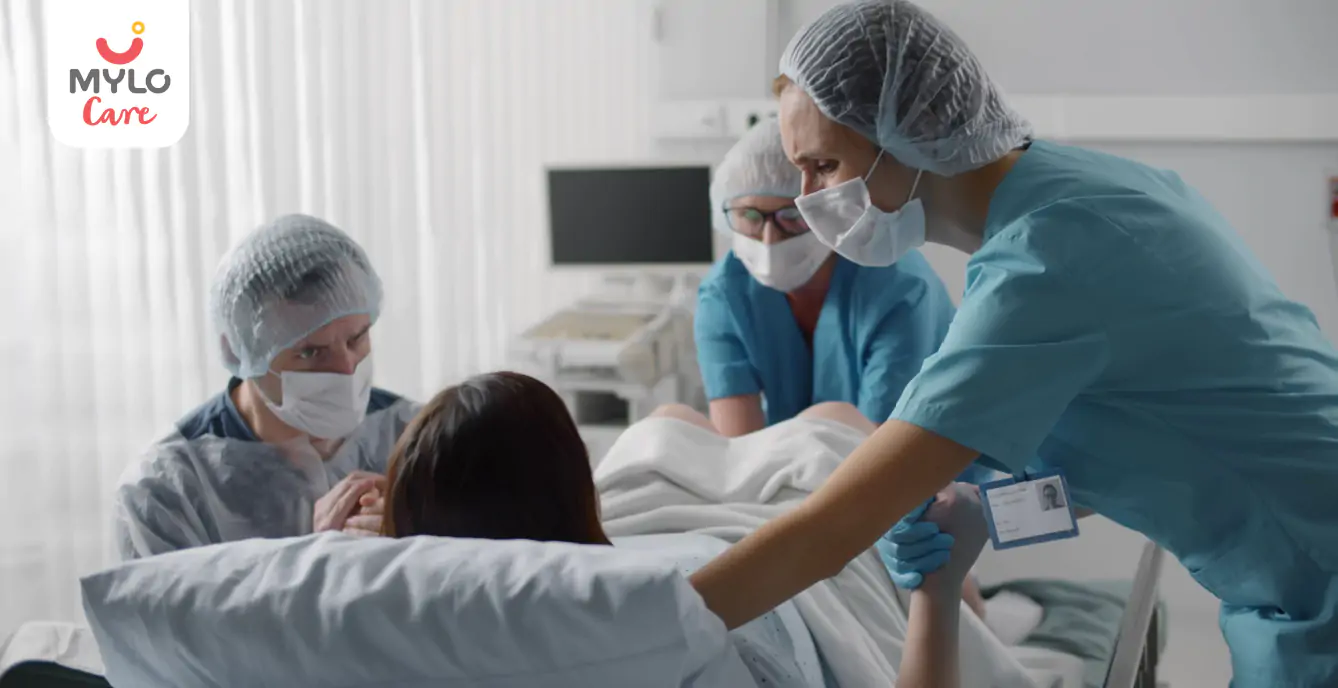Home

Women Specific Issues

Uterus Didelphys: Understanding Symptoms, Risks and Treatment Options
In this Article

Women Specific Issues
Uterus Didelphys: Understanding Symptoms, Risks and Treatment Options
Updated on 3 January 2024



Medically Reviewed by
Dr. Shruti Tanwar
C-section & gynae problems - MBBS| MS (OBS & Gynae)
View Profile

As women, having a uterus is a gateway to experiencing life’s greatest joy and at the same time, a string of pesky problems. A uterus allows a woman to grow a baby but it also puts her through recurring periods, the pain and PMS that comes with it and much more. But what happens when a woman has a double uterus?
Uterus didelphys is a rare congenital condition characterized by the presence of two separate uteri, each with its own cervix and sometimes even two vaginas. While this condition may sound intriguing, it can pose various challenges for women, impacting their fertility, menstrual cycles, and overall well-being.
In this article, we will understand what a double uterus means, the difference between normal and didelphys uterus, didelphys uterus vs bicornuate, implications of a uterus didelphys pregnancy and treatment options available for this condition.
What is Uterus Didelphys?
Uterus didelphys, also known as double uterus, is a congenital abnormality that occurs when a woman develops two separate uterine cavities. Unlike the normal uterus, which is a single, pear-shaped organ, a woman with uterus didelphys has a uterus that is divided into two distinct sections, each with its own cervix.
The development of uterus didelphys happens during embryogenesis when the Müllerian ducts, which eventually form the uterus, fail to fuse properly. As a result, two separate uterine structures form, leading to a double uterus. This condition is relatively rare, affecting approximately 1 in 3,000 women.
You may also like: Bulky Uterus: What You Need to Know About this Common Gynecological Issue
What are the Symptoms of Uterus Didelphys?
The symptoms of uterus didelphys can vary from person to person. In some cases, women may not experience any noticeable symptoms and may only discover their condition during a routine pelvic examination or when seeking medical help for infertility.
However, for others, the following symptoms may be present:
1. Painful periods
Women with uterus didelphys may experience more severe menstrual cramps compared to those with a normal uterus. This can be attributed to the additional uterine tissue and the increased surface area where the endometrial lining sheds.
2. Abnormal vaginal bleeding
Some women with uterus didelphys may experience irregular or heavy vaginal bleeding. This can occur due to hormonal imbalances or the unique structure of the double uterus.
3. Recurrent miscarriages
Uterus didelphys has been associated with an increased risk of miscarriages. The division of the uterus can lead to abnormalities in the shape and size of the uterine cavity, making it more challenging for a pregnancy to implant and develop properly.
You mat also like : Bulky Uterus with Fibroids: Understanding Causes, Symptoms, and Treatment Options
Uterus Didelphys vs Bicornuate Uterus
Let us now understand the difference between bicornuate uterus vs didelphys. These are two distinct conditions that involve abnormalities in the structure of the uterus. While both conditions are characterized by a division of the uterine cavity, there are some key differences between them.
In uterus didelphys, the uterus is completely divided into two separate structures, each with its own cervix. On the other hand, a bicornuate uterus is characterized by a single uterus that has a partial division, resulting in a heart-shaped appearance.
Another notable difference is the risk of pregnancy complications. Women with uterus didelphys may have better pregnancy outcomes compared to bicornuate uterus. Ultimately, the specific pregnancy outcomes for each individual will depend on various factors, including the severity of the uterine abnormality, any associated complications, and the overall health of the woman.
What are the Chances of Pregnancy in Uterus Didelphys?
The chances of achieving a successful uterus didelphys pregnancy can vary depending on various factors, including the severity of the condition and any associated reproductive health issues. While getting pregnant with uterus didelphys is possible, it may present some challenges.
The presence of a double uterus can make it more difficult for a fertilized egg to implant and develop properly. However, with proper medical care and monitoring, many women with this condition can still go on to have healthy pregnancies and give birth to healthy babies.
It is essential for women with uterus didelphys who wish to conceive to consult with a reproductive specialist. These experts can provide guidance on fertility treatments, such as in vitro fertilization (IVF), which can increase the chances of successful pregnancy.
What are the Risks of Uterus Didelphys Pregnancy?
Pregnancy in women with uterus didelphys comes with certain risks that need to be carefully managed. Here are five potential risks associated with such a pregnancy:
1. Miscarriage
Women with uterus didelphys have an increased risk of miscarriage, particularly during the first trimester. The abnormalities in the uterine structure can make it challenging for a pregnancy to implant and develop properly.
2. Preterm birth
Uterus didelphys is associated with a higher risk of preterm delivery. The unique structure of the double uterus can cause mechanical issues that may lead to premature labor.
3. Malpresentation
Babies born to women with uterus didelphys may have a higher chance of being in a breech or transverse position. This can increase the likelihood of complications during delivery and may necessitate a cesarean section.
4. Retained placenta
Uterus didelphys can increase the risk of placental abnormalities, such as retained placenta. These conditions can have serious implications for both the mother and the baby. In uterus didelphys, the presence of two separate uterine cavities can hinder the coordinated contractions needed to expel the placenta after childbirth.
5. Uterine rupture
In rare cases, the presence of a double uterus can increase the risk of uterine rupture during labor. This is a life-threatening emergency that requires immediate medical intervention.
Uterus Didelphys Treatment Options
Uterus didelphys usually does not need any treatment as most patients are asymptomatic. Even in pregnancy, just monitoring is enough and most patients rarely ever required surgery. The choice of treatment depends on various factors, including the individual's reproductive goals and any existing complications.
1. Surgical intervention
In some cases, surgery may be recommended to correct certain uterine abnormalities associated with uterus didelphys. This can help create a more favorable environment for pregnancy by enhancing the shape and structure of the uterus.
2. Fertility treatments
Assisted reproductive technologies, such as in vitro fertilization (IVF), can be used to increase the chances of pregnancy in women with uterus didelphys. IVF involves the fertilization of eggs in a laboratory setting and the subsequent transfer of embryos into the uterus.
Also read : Embryo Transfer
3. Regular monitoring and care
Women with uterus didelphys require close monitoring throughout pregnancy to identify and manage any potential complications. This includes regular prenatal check-ups, ultrasounds, and other diagnostic tests to ensure the well-being of both the mother and the baby.
Final Thoughts
Uterus didelphys is a rare congenital condition that affects the structure of the uterus. While it can present challenges, with proper medical care and management, many women with uterus didelphys can still have successful pregnancies. It is important for women with this condition to consult with a reproductive specialist to discuss their options and receive personalized care.
References
1. Rezai S, Bisram P, Lora Alcantara I, Upadhyay R, Lara C, Elmadjian M. (2015). Didelphys Uterus: A Case Report and Review of the Literature. Case Rep Obstet Gynecol.
2. Ćwiertnia A, Borzyszkowska D, Golara A, Tuczyńska N, Kozłowski M, Kwiatkowski S, Cymbaluk-Płoska A. (2022). The Impact of Uterus Didelphys on Fertility and Pregnancy. Int J Environ Res Public Health.





Medically Reviewed by
Dr. Shruti Tanwar
C-section & gynae problems - MBBS| MS (OBS & Gynae)
View Profile


Written by
Anupama Chadha
Anupama Chadha, born and raised in Delhi is a content writer who has written extensively for industries such as HR, Healthcare, Finance, Retail and Tech.
Read MoreGet baby's diet chart, and growth tips

Related Articles
Related Questions
Influenza and boostrix injection kisiko laga hai kya 8 month pregnancy me and q lagta hai ye plz reply me

Hai.... My last period was in feb 24. I tested in 40 th day morning 3:30 .. That is faint line .. I conculed mylo thz app also.... And I asked tha dr wait for 3 to 5 days ... Im also waiting ... Then I test today 4:15 test is sooooo faint ... And I feel in ma body no pregnancy symptoms. What can I do .

Baby kicks KB Marta hai Plz tell mi

PCOD kya hota hai

How to detect pcos

Related Topics
RECENTLY PUBLISHED ARTICLES
our most recent articles

Women Specific Issues
Septate Uterus: A Comprehensive Guide on Symptoms, Risks, and Treatment Options

Vaccinations
Should Pregnant Women Get Flu Shots

Tips For Normal Delivery
Why you should choose a Vaginal Delivery? Know the pros & cons

Pregnancy Precautions
The Art of Painting When Pregnant: Tips for a Safe and Creative Experience

Do Pregnant Women Get Their Period?

Conception
A Guide to Precautions After Ovulation When Trying to Conceive
- Tight Vagina and Women's Health: An In-Depth Guide
- The Ultimate Guide to Using Olive Oil for Baby Massage
- Heat Rash During Pregnancy: Causes, Symptoms and Prevention
- The Ultimate Guide to Understanding the Reasons for Late Period
- What Can Be the Maximum Delay in Periods If Not Pregnant?
- Black Period Blood: Is It Normal or a Cause for Concern?
- Lean PCOS: A Comprehensive Guide on Causes, Symptoms and Treatment
- PCOS Mood Swings: The Ultimate Guide to Causes and Strategies for Relief
- PCOS and Thyroid: Understanding the Complex Relationship and Finding Solutions
- Intermittent Fasting & PCOS: The Ultimate Guide to Benefits, Risks and Precautions
- Insulin Resistance & PCOS: A Comprehensive Guide to Causes and Management
- Your heart stops beating when your baby feels breathless! Here are 5 things to know about infant breathlessness.
- Newborn Crying: What It Means and How to Handle It?
- When Do Babies Make Eye Contact: Keeping an Eye on Important Milestones


AWARDS AND RECOGNITION

Mylo wins Forbes D2C Disruptor award

Mylo wins The Economic Times Promising Brands 2022
AS SEEN IN
















- Mylo Care: Effective and science-backed personal care and wellness solutions for a joyful you.
- Mylo Baby: Science-backed, gentle and effective personal care & hygiene range for your little one.
- Mylo Community: Trusted and empathetic community of 10mn+ parents and experts.
Product Categories
baby carrier | baby soap | baby wipes | stretch marks cream | baby cream | baby shampoo | baby massage oil | baby hair oil | stretch marks oil | baby body wash | baby powder | baby lotion | diaper rash cream | newborn diapers | teether | baby kajal | baby diapers | cloth diapers |








